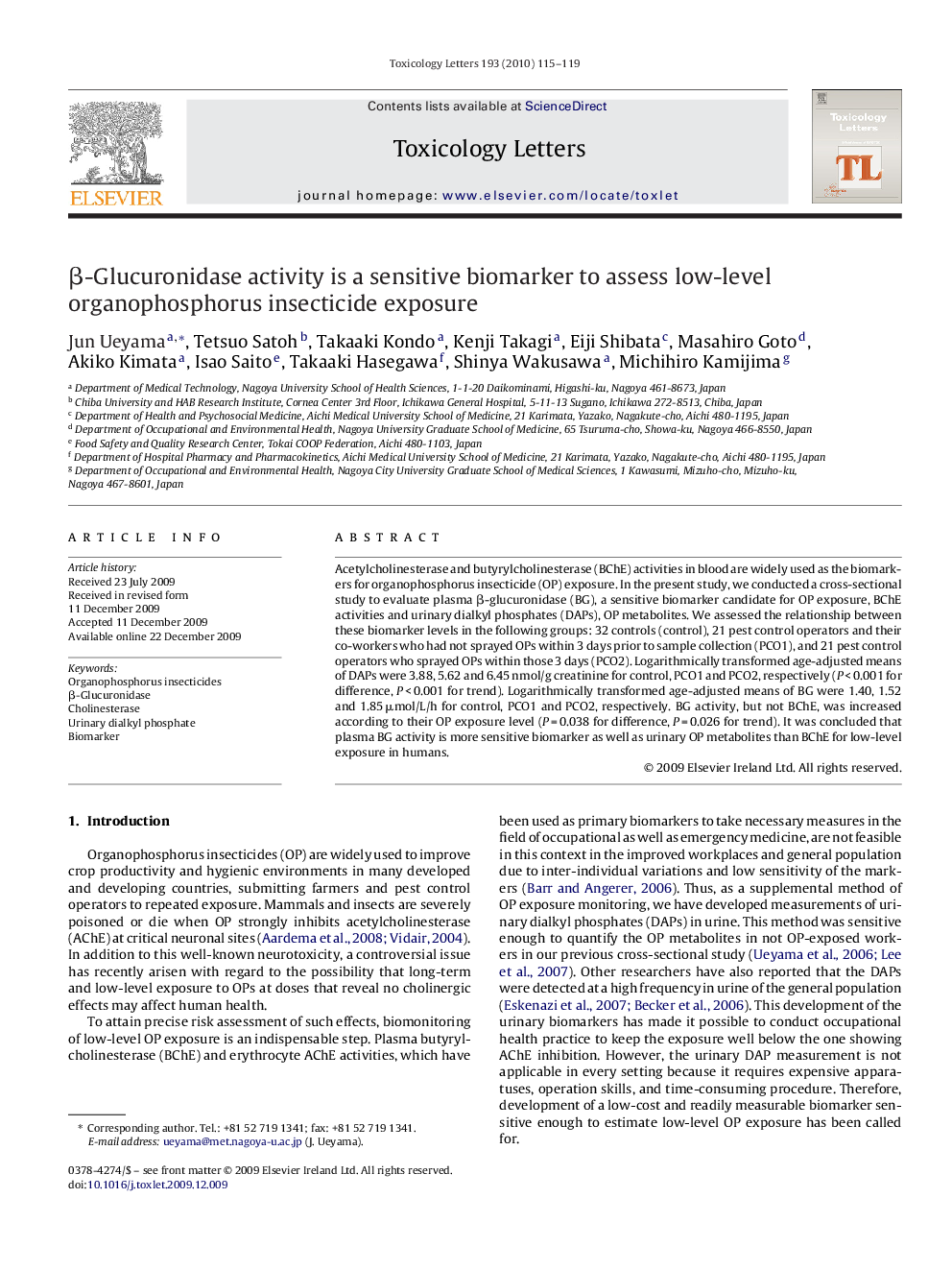| Article ID | Journal | Published Year | Pages | File Type |
|---|---|---|---|---|
| 5860977 | Toxicology Letters | 2010 | 5 Pages |
Abstract
Acetylcholinesterase and butyrylcholinesterase (BChE) activities in blood are widely used as the biomarkers for organophosphorus insecticide (OP) exposure. In the present study, we conducted a cross-sectional study to evaluate plasma β-glucuronidase (BG), a sensitive biomarker candidate for OP exposure, BChE activities and urinary dialkyl phosphates (DAPs), OP metabolites. We assessed the relationship between these biomarker levels in the following groups: 32 controls (control), 21 pest control operators and their co-workers who had not sprayed OPs within 3 days prior to sample collection (PCO1), and 21 pest control operators who sprayed OPs within those 3 days (PCO2). Logarithmically transformed age-adjusted means of DAPs were 3.88, 5.62 and 6.45 nmol/g creatinine for control, PCO1 and PCO2, respectively (P < 0.001 for difference, P < 0.001 for trend). Logarithmically transformed age-adjusted means of BG were 1.40, 1.52 and 1.85 μmol/L/h for control, PCO1 and PCO2, respectively. BG activity, but not BChE, was increased according to their OP exposure level (P = 0.038 for difference, P = 0.026 for trend). It was concluded that plasma BG activity is more sensitive biomarker as well as urinary OP metabolites than BChE for low-level exposure in humans.
Related Topics
Life Sciences
Environmental Science
Health, Toxicology and Mutagenesis
Authors
Jun Ueyama, Tetsuo Satoh, Takaaki Kondo, Kenji Takagi, Eiji Shibata, Masahiro Goto, Akiko Kimata, Isao Saito, Takaaki Hasegawa, Shinya Wakusawa, Michihiro Kamijima,
